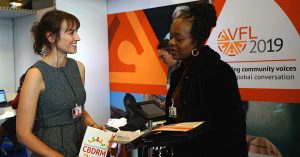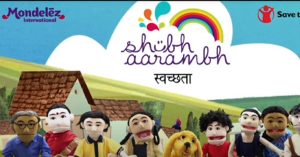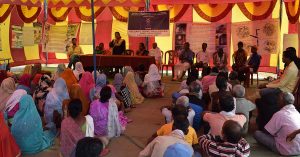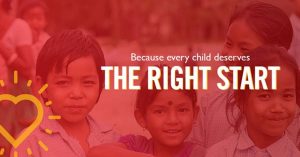Client : Save the Children
Sector : NGO
Location : Chennai
Language : English, Tamil
SDG: Goal 3:Good Health and Well-being, Goal 10:Reduced Inequality, Goal 16:Peace and Justice Strong Institutions, Goal 17:Partnerships to achieve the Goal
Implemented: 2018
Safeguarding the rights of children in conflict with the law
In India and around the world, Save the Children’s pioneering programmes address children’s unique needs, giving them a healthy start, the opportunity to learn and protection from harm. They are outspoken champions for children, ensuring their voices are heard and their issues are given top priority. Drawing on a century of leading expertise, they take on the toughest challenges facing the hardest-to-reach children – especially those unfairly excluded from the world’s progress.
Save the Children engaged us in conceptualising a technological solution that would allow children in conflict with law to be interviewed by legal authorities and other stakeholders without fearing further victimization. We quickly realized that, when children come into conflict with the law, they are often at the mercy of officials least concerned about the preservation of these children’s rights. The journey of such a child involves interfacing with many stakeholders, even before the case is heard. Typically, the child is interviewed by a case worker – preferably a social worker – who prepares and hands over a case file to the police department. The health department and judicial system may also be involved in resolving the case.
In this process, the child usually gets interviewed multiple times regarding the same incident by different persons, which can lead to victimization and cause trauma since the child is under pressure to recollect the same information repeatedly. It is therefore vital that the child is treated humanely, in line with his/ her rights, with due allowance for any unintentional inaccuracies in responses, which are often a result of handwritten transmission of evidence.
“The first thing I noticed when we visited the spartan centre was this eeriness and lack of empathetic setting whatsoever. It had this typical government-ish feel and the traumatised children who arrive there would have very less reasons to feel secure and find solace. All this would have to be addressed in the new design.”
Lakshay Dharan, Director, Integral World.
Adding to our challenge was the fact that India’s juvenile justice system has also come under a scanner recently, both due to the statistically significant involvement of juveniles in serious crime as well as their subsequent treatment by those charged with implementing relevant laws. The 2016 Justice Verma Committee report, for instance, highlighted the hostility children in conflict with the law faced throughout their engagement with various officers of the law. This helped us understand that children need to be physically separated from their interviewers – and technology could make this possible. Putting the security and well-being of these children front and centre helped us see how, once this first aim was ensured, the process of case resolution could actually proceed faster by minimizing the number of interactions the children go through.
Putting the child at the heart of the Multi-Resource Centre
The first milestone in our engagement with Save the Children was to create a Multi-Resource Centre prototype as an implementation of our technological solution which reduces the amount of interaction a child in conflict with the law has with various persons in the system. The Centre would give the child a protected platform and thereby the freedom to express himself/herself. Such a Multi-Resource Centre prototype was eventually created at the headquarters of the Tamil Nadu government’s Department of Social Defence, located in Chennai.
Our plan for the Multi-Resource Centre included a ‘Child Friendly’ room, wherein a designated person could interact with the child while the Child Welfare Committee Chairperson and other relevant stakeholders could observe the process through a video conferencing facility. We saw this as ensuring privacy for the child throughout the inquiry. Further, to enhance the child’s comfort and make the dialogue more friendly, we equipped the centre with a range of resource materials such as colourful furniture, toys, informational posters, and drawing boards. We also proposed including a small library and a fish tank to keep the children entertained.
“The [Multi-Resource] centre is set up with a child friendly ambience to create a comfortable and facilitative environment for the enquiry process, such that the children can fearlessly and openly express their views. This Centre will also help in coordinating proceedings with multiple stakeholder which will lead to early disposal or settlement of cases.”
Hon’ble Justice Indira Banerjee, Supreme Court of India
“The well being of children should be our primary concern and the centre aims to reduce the trauma and the possible re-victimisation that a child could face”
Ms. Justice Vijaya Kamlesh Tahilramani, Chief Justice, Madras High Court
At the centre, we suggested nominating a male or female interpreter to conduct the inquiry, depending on the gender of the child. The stakeholders/service providers observing the proceedings can interact with the child for any clarification, or seek additional information, via the person conducting the dialogue with the child without directly asking the child. The proceedings can be recorded for later reference during the investigation. This way, we intended to reduce re-victimization and concomitant trauma for the child. A stakeholder unable to attend the proceedings can follow the entire case history by replaying the recorded proceedings.
Looking beyond the success of the Multi-Resource Centre
Developed at a cost of INR 11.50 lakhs in September 2018, this Multi-Resource Centre prototype has been doing a remarkable job in promoting children’s rights, providing relief and support to children in need. The ambience of this Centre has been given a child-friendly appearance, where the child will feel comfortable and secure, and come forward to have a fearless dialogue during the inquiry process. In addition to this, a comprehensive, holistic and effective action plan is being evolved for the rehabilitation and growth of children who have been affected.
Quote
“The centre seeks to follow the norms specified by the Juvenile Justice (Care and Protection of Children) Act, 2015, which emphasises the need to have a child-friendly approach during enquiry. It is extremely important to have more of these centres so that the enquiry process can be carried out without traumatising the child.”
Santanu Chakraborthy, Deputy Programme Director, Save the Children
After successful use of this prototype, the same model can be extended further to all 32 districts in Tamil Nadu.
Keywords: children’s rights, Juvenile Justice, child friendly, Child Welfare, protection for children, victimization, trauma, save the children, Tamil Nadu, Multi Resource Centre, technological interface, technology, prototype, care and protection, rehabilitation, Goal 3:Good Health and Well-being, Goal 10:Reduced Inequality, Goal 16:Peace and Justice Strong Institutions, Goal 17:Partnerships to achieve the Goal, chennai, Best NGO to Support Child Rights, child protection, Sustainable Development Goals.





